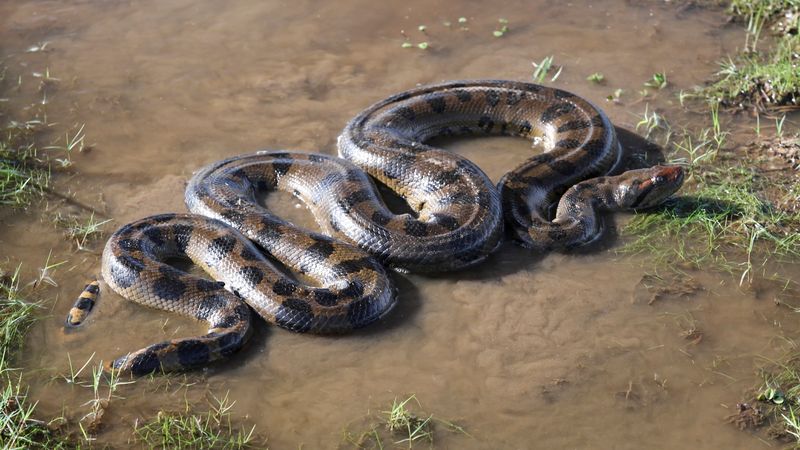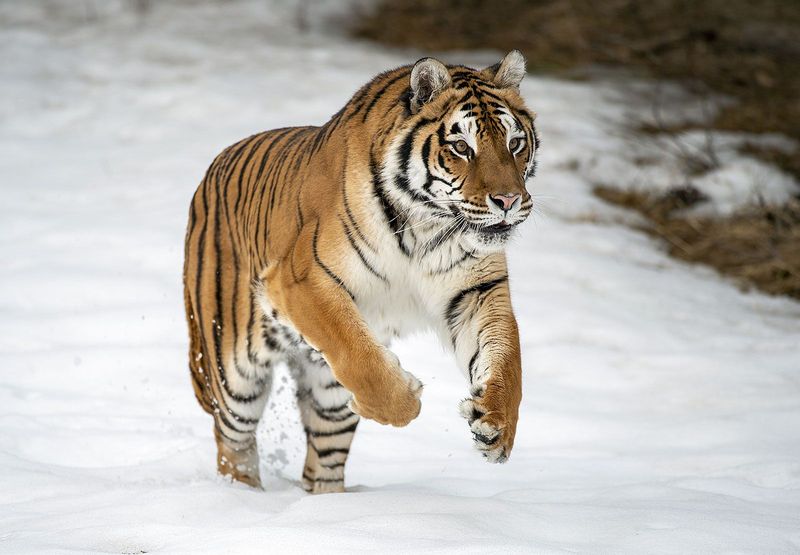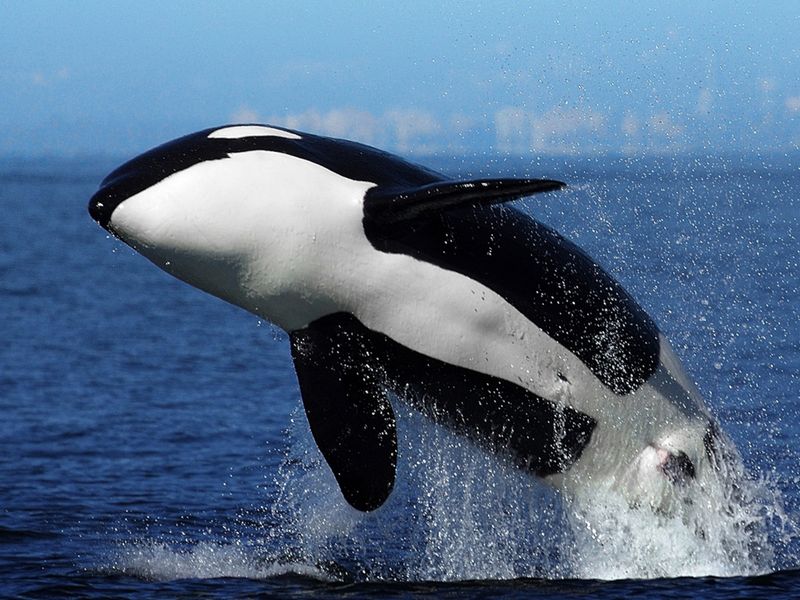📖 Table of Content:
Discover the awe-inspiring power of Earth’s most formidable creatures, whose strength and abilities leave us in admiration. Found across diverse habitats, from the mysterious depths of the ocean to the sunlit savannahs, these animals represent the pinnacle of strength, resilience, and adaptability. Their impressive feats and dominance highlight the incredible diversity of life on our planet.
In this post, we explore ten of the most powerful creatures in the animal kingdom, each with unique traits that set them apart. From the unmatched strength of the African elephant to the ferocious bite of the saltwater crocodile, these animals demonstrate what it takes to thrive as apex predators or dominant forces in their environments. Their abilities showcase nature’s remarkable ingenuity and evolution.
Join us on this captivating journey to learn about the raw power, cunning, and survival skills that define these extraordinary beings. As we celebrate their dominance and resilience, we also gain a deeper appreciation for the wonders of the natural world and the delicate balance that sustains it.
1. African Elephant
A majestic symbol of strength and wisdom, the African elephant is the largest land mammal, weighing up to 7 tons. Their trunks serve as versatile tools for communication, feeding, and even uprooting trees.
These gentle giants have strong familial bonds, often moving in matriarchal groups. Their sheer size deters most predators. Despite their strength, they face threats from habitat loss and poaching.
Conservation efforts are crucial to ensuring their survival. Elephants are keystone species, playing a vital role in maintaining the ecological balance of their habitats.
2. Great White Shark
An apex predator of the ocean, the great white shark is built for hunting with its streamlined body and powerful tail, enabling it to swiftly chase down prey. Rows of sharp teeth further enhance its formidable capabilities.
Great whites have an acute sense of smell, detecting blood from miles away. They play a crucial role in marine ecosystems by keeping prey populations in check.
Despite their fearsome reputation, they are vulnerable to overfishing and habitat loss. Efforts to protect this species are vital for ocean health. Understanding their behavior helps dispel myths and promote coexistence.
3. Saltwater Crocodile
Saltwater crocodiles are ancient reptiles known for their incredible strength and stealth. The largest of all living reptiles, they can grow over 20 feet long. Their powerful jaws can crush bones with ease.
Masters of ambush, they lurk beneath the water’s surface, waiting to strike unsuspecting prey. These crocodiles are highly territorial and can be aggressive.
Conservation efforts have helped stabilize their populations, but they still face threats from habitat destruction. Respect for their habitats and understanding their behavior can help mitigate human-crocodile conflicts.
4. Bald Eagle
The bald eagle, a symbol of freedom, is a powerful bird of prey. With a wingspan of up to 8 feet, they soar effortlessly through the skies. Their keen eyesight allows them to spot prey from great distances.
Bald eagles primarily feed on fish, swooping down with incredible precision. They build large nests high in trees, often returning to the same nest year after year.
Once endangered due to DDT and habitat loss, conservation efforts have led to a remarkable recovery. They remind us of the importance of protecting our natural heritage.
5. Anaconda
The heaviest snakes in the world, anacondas are masters of stealth in the dense Amazon rainforest. Growing over 30 feet long, they subdue prey through immense constricting power.
These apex predators primarily hunt in water, using their muscular bodies to ambush prey. Anacondas play a vital role in controlling populations of various species.
Their secretive nature makes them less understood, and they are often misunderstood. Protecting their habitats ensures the balance of the ecosystems they inhabit. Education about their role in the rainforest can foster a deeper appreciation.
6. Komodo Dragon
The world’s largest lizard, the Komodo dragon, is a formidable predator native to Indonesia. Reaching up to 10 feet in length, these reptiles are efficient hunters, equipped with strong limbs and sharp claws.
Komodos have a unique hunting strategy, using their venomous bite to incapacitate prey. They play a crucial role in their ecosystem as apex predators.
Habitat loss and human activities threaten their survival. Conservation programs aim to protect these unique reptiles and their habitats. Understanding Komodos is key to preserving the biodiversity of their native islands.
7. Polar Bear
Icons of the Arctic, polar bears are powerful symbols of survival. Adapted to their harsh environment, their large bodies and thick fur allow them to endure freezing temperatures. Exceptional swimmers, they hunt seals across vast icy expanses.
These apex predators face threats from climate change, as melting ice reduces their hunting grounds. Conservation efforts focus on preserving their habitat and mitigating climate impacts.
Polar bears remind us of the fragile balance in nature and the urgent need for action. Their survival is intricately linked to the health of the Arctic ecosystem.
8. Siberian Tiger
The Siberian tiger, the largest of the big cats, is a symbol of strength and beauty. Endemic to the forests of Russia, they are solitary hunters with powerful builds.
Their striped coats provide excellent camouflage, allowing them to ambush prey. Tigers play a critical role in maintaining the balance of their ecosystems.
Poaching and habitat loss threaten their survival, but conservation efforts have shown positive results. Protecting tigers requires international cooperation and habitat preservation. They inspire awe and underscore the importance of biodiversity.
9. Orca
Apex predators of the sea, orcas, also known as killer whales, are instantly recognizable by their striking black and white patterns. These social animals live in pods, exhibiting complex social structures and strong familial bonds.
Their intelligence and coordinated hunting techniques make them formidable hunters. Orcas play a vital role in marine ecosystems, helping maintain balance.
Threats such as pollution and climate change impact their populations. Conservation efforts are essential to protect these intelligent creatures and their habitats. Understanding orcas fosters a deep connection to the ocean’s wonders.
10. Gorilla
Gentle giants of the forest, gorillas are renowned for their strength and intelligence. Sharing 98% of their DNA with humans, these primates display complex social behaviors and strong family bonds.
Silverbacks lead family groups, showcasing leadership and protection. Gorillas play a crucial role in their ecosystems by dispersing seeds and maintaining vegetation.
Habitat destruction and poaching are major threats to their survival. Conservation programs focus on habitat preservation and anti-poaching measures. Gorillas remind us of our connection to nature and the importance of protecting biodiversity. Education and awareness are key to their conservation.










